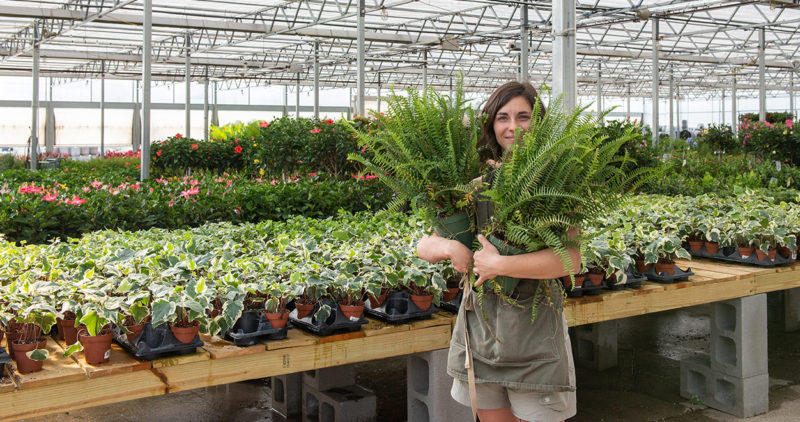
Our Container Design specialists love discussing design ideas, and helping you choose the right plants to make those designs come to life. And sometimes, these conversations include figuring out what hasn’t worked for you in the past. If some of your earlier container designs have left you feeling underwhelmed, you might be making one of these three common design mistakes. But don’t worry – we have easy tips to get your container designs looking fabulous this year.
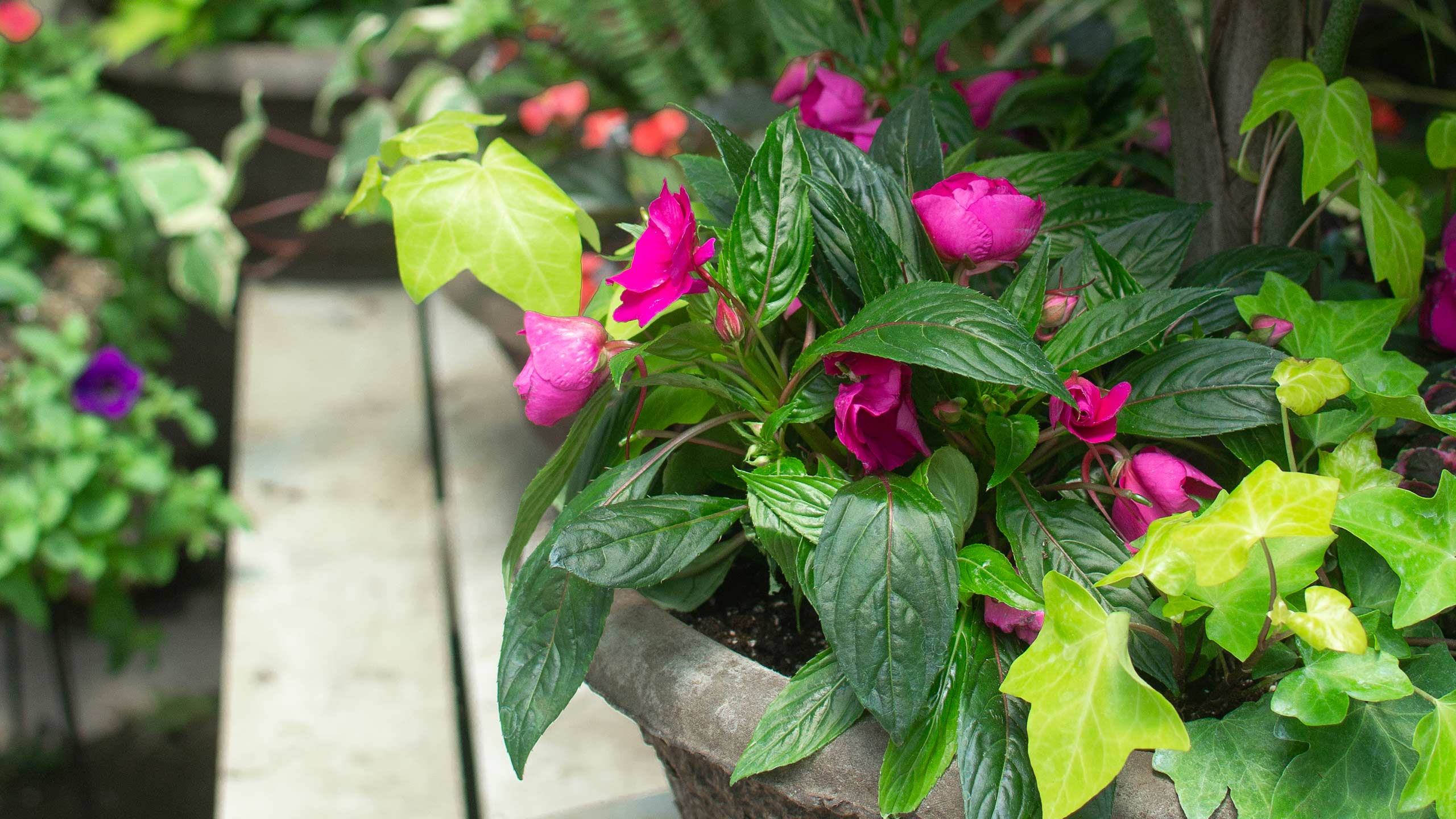
The Design is Missing Something
One of the hallmarks of great design is visual balance, and an easy way to achieve this balance in a container is by choosing plants from each of three different layers. Typically, we start with something tall – maybe a tall plant, cut branches, or birch poles. Then we fill in with the next layer – usually medium-height blooms or colorful foliage. And finally, we finish the design with low, trailing plants – like Algerian ivy or wire vine – that drape over the edge of the pot. A classic combination might be a tall ravenea palm surrounded by mounding Sunpatiens and trailing lime green lysimachia. Together, the three elements fill the visual space with balanced layers of color and texture. It’s not necessary to have all three elements – breaking the rules can be creative too. But, including all three will almost always result in a winning combination.
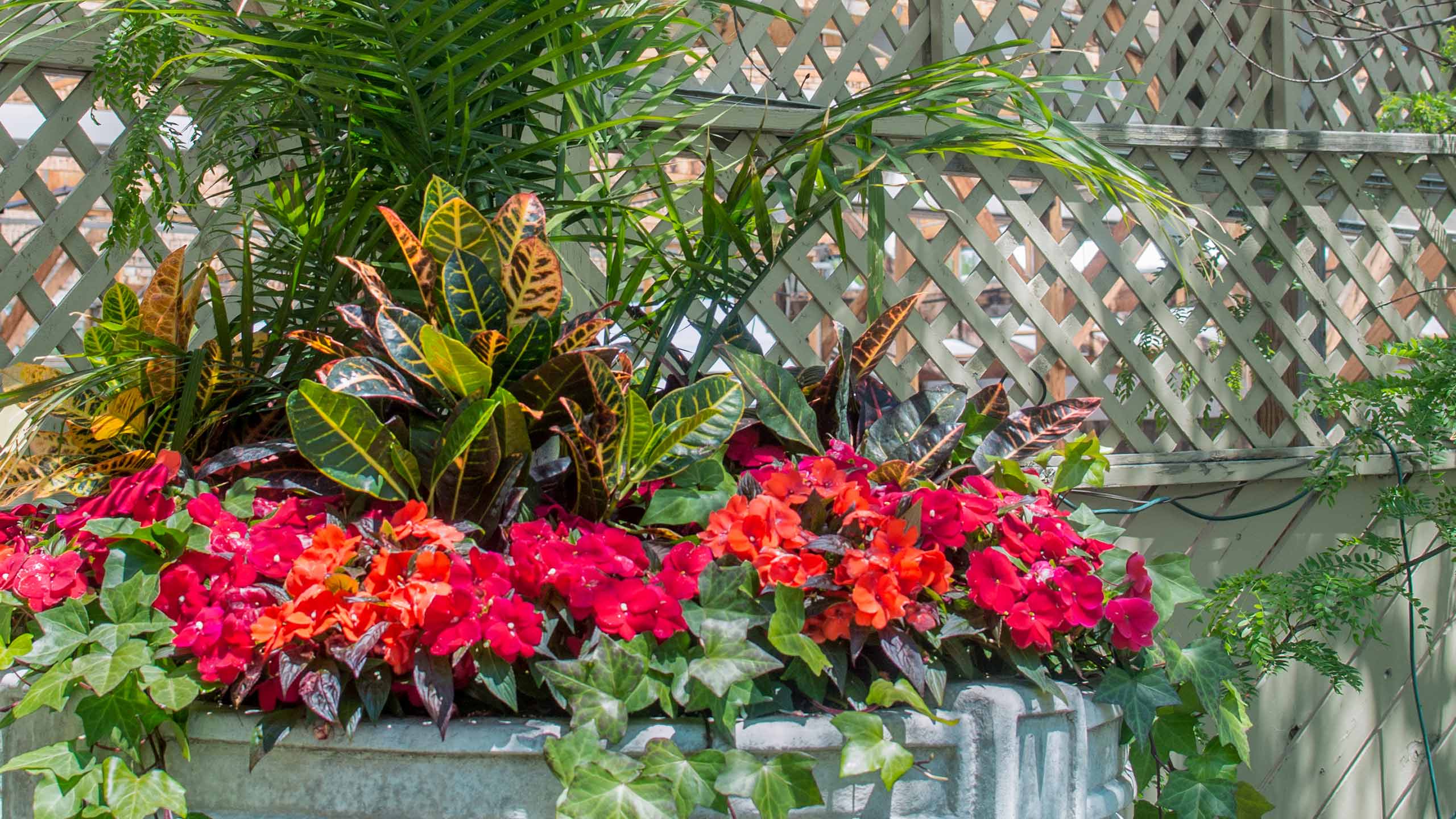
The Design is Too Complicated
There are so many beautiful plants to choose from, and it’s tempting to include all of your favorite blooms and colors in one container. But when too many plants are used in the same space, the result is visually busy, making it hard to appreciate any one flower. For a more satisfying design – with a greater visual impact – sticking with two or three colors is usually best. For example, you could start with one ravenea palm and surround it with a single type of red geranium. Then, around the geraniums, plant a few trailing plants in another favorite color – like purple petunias or yellow calibrachoa. As they grow, the plants will create three large blocks of color – a bold combination to draw attention from across the neighborhood.
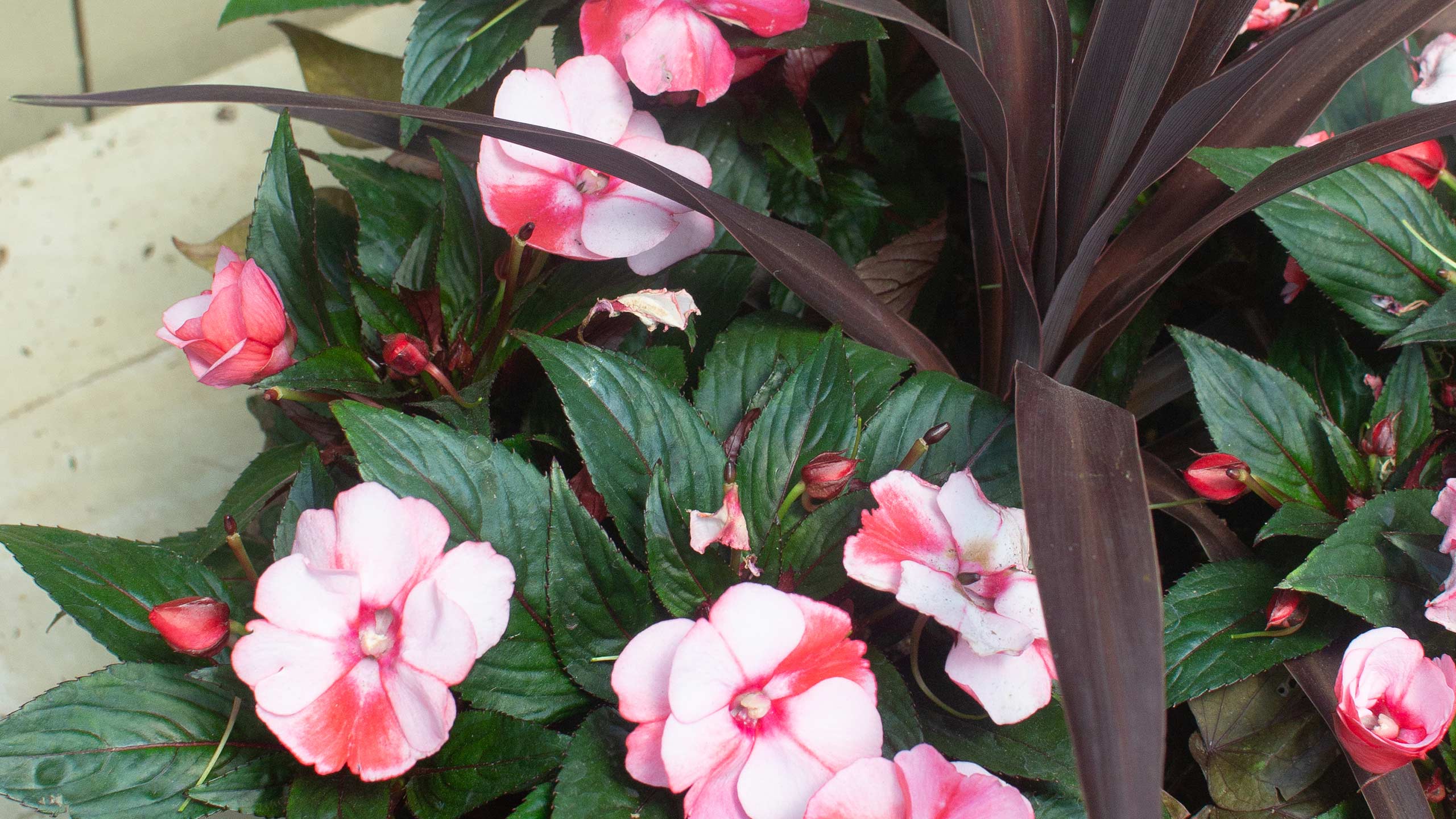
The Pot Overwhelms the Plants
Another common mistake we see in containers is using plants that are too small for a large pot. For example, a gardener – thinking everything will eventually grow to fill in – might plant a 4” spike in a big, 18” planter and surround it with a six-pack of begonias and a few vinca vines. This classic combination contains all three layers recommended for a balanced design – with a visually simple design – but the small plants are out of proportion to the big pot. And there’s a lot of bare soil. A good rule of thumb is to imagine that the bottom third of your completed design is the container, and the top two-thirds are the plants standing above. So, for a container that’s 18” tall, your tallest plant should stand almost 3’ above the pot. Instead of a small spike, try a taller red or green cordyline spike. Then, complete the design with larger plants to fill in and spill over the sides
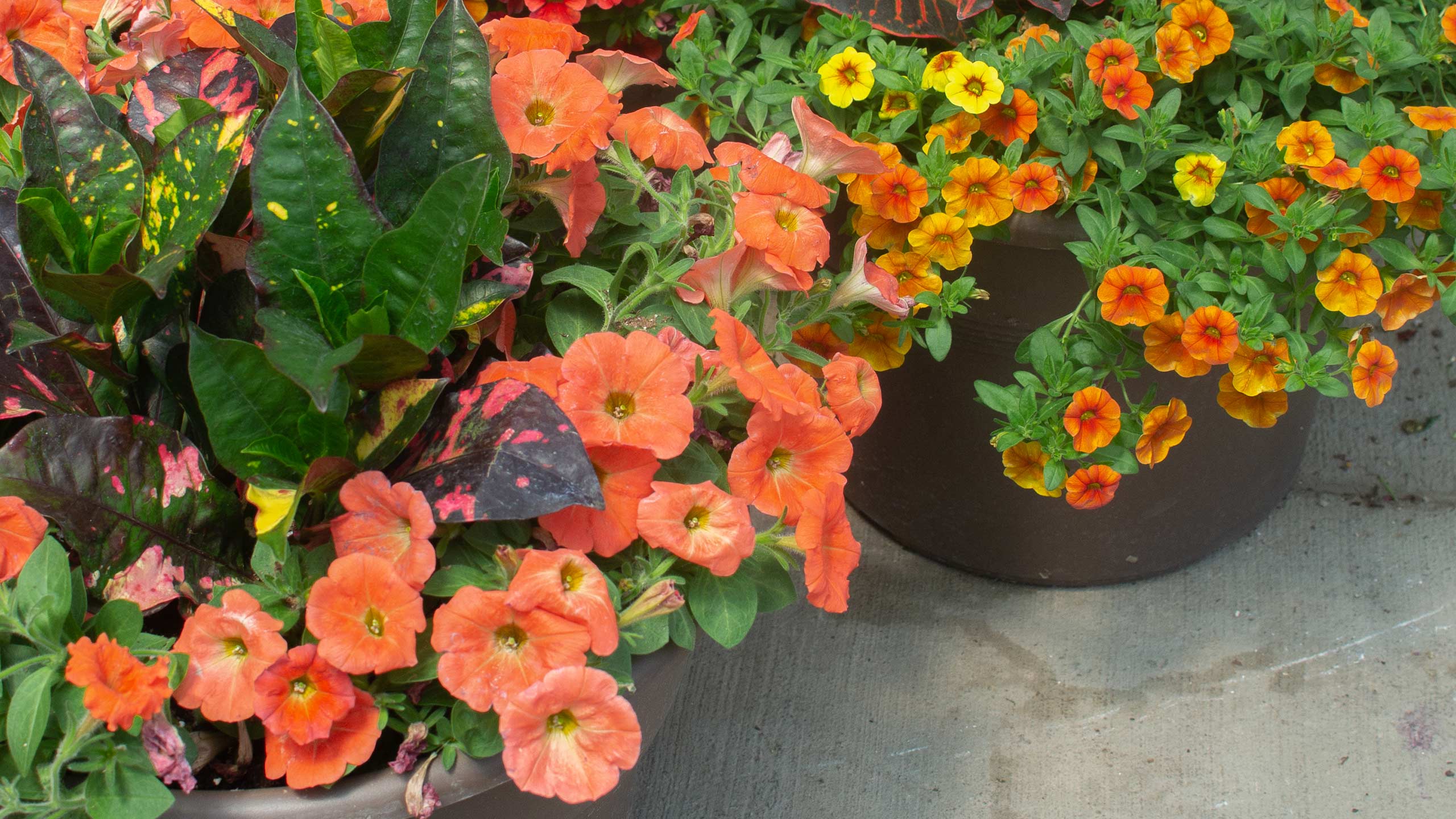
Let’s Get Planting
If you love planting in containers like we do – but the results haven’t always hit the mark – we’re sure these tips will help. And if you’re looking for inspiration, stop by the new Container Design space – now located in our Plaza – to see our collection of beautiful containers. For even more tips and design ideas, join us for Container Design – a demonstration on Saturday, April 28th, at 10am and 2pm. Or, just talk to one of our Container Design specialists – we’re always happy to create new designs with you.


